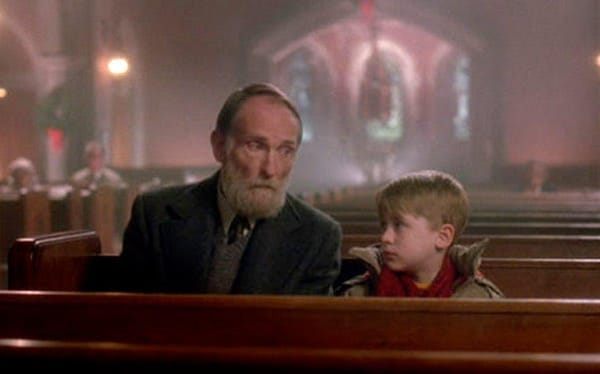[Nerdspresso] The Cheesecake Factory of Cinema: Rebel Moon and Other Misadventures in the Snyderverse
![[Nerdspresso] The Cheesecake Factory of Cinema: Rebel Moon and Other Misadventures in the Snyderverse](/content/images/size/w1200/wordpress/2024/04/rebelmoon2.jpg)
There was a time when I approached a Zack Snyder movie with a certain amount of enthusiasm, but now it’s with a mixture of morbid fascination and an impending sense of dread.
His directorial debut in 2004 was promising. It was a visceral reimagining of George Romero’s Dawn of the Dead, which blended classic tropes with the aggressive “fast angry zombies” from 28 Days Later. It was a creepy, no-holds-barred thrill ride. His follow-up was an eye-popping adaption of Frank Miller’s epic graphic novel, 300 – a hypodermic of adrenaline stabbed into the heart of the sword and sandals genre.
There was a certain amount of hubris in his next assignment. He took on the awesome task of turning Watchmen into a movie. This legendary comic book series by Alan Moore and Dave Gibbons had revolutionized the industry in the late ‘80s. This project was nothing less than daunting. Visionaries like Terry Gilliam and Darren Aronofsky had tried and failed to rescue this one from the fires of development hell. Snyder’s Watchmen was an engaging, sumptuous, and mostly loyal (in some cases too loyal) adaption of the source material.
Fanboys have debated the quality of his acheivement for 15 years. Some dispute the deviation from the comic in the film’s third act. I actually think it works and wish Snyder had made more changes to streamline the story. Watching Watchmen, you notice that slo-mo action scenes, grandiose visuals, and long running times start to feel less like the stylistic touches of 300 and more like the hallmarks of an emerging brand.
Following Watchmen, Snyder took a break from established superheroes to play in his own sandbox with Sucker Punch, which is when the Snyderverse really starts to take hold. Lots of extravagant images, lots of slo-mo. Sucker Punch plays like what happens when somoene uses the Pussycat Dolls as avatars in a round of Fortnite. This movie is all style over substance with an incomprehensible narrative, schizophrenic visuals, and unlikeable characters. Sucker Punch was a modest hit and quickly forgotten, so it’s no surprise that his next flick was a return to comic book characters with a reboot of Superman in 2013.
Here’s when the fanboys start to get really divided about this guy’s work. While he was almost slavish to the original text with Watchmen, he makes some pretty broad departures from canon with Man of Steel, his first Superman movie. Some don’t appreciate Snyder’s attempts to make Supes a darker, more complex character. They have a point, do we really need a brooding Superman, but let’s see where he’s going with it. While Christopher Reeve will always be the archetype for the cinematic Supes in my opinion, I enjoyed Henry Cavill’s portrayal and actually think Man of Steel is a decent movie.
Not content with firmly establishing the character before expanding into a new universe, Snyder followed up Man of Steel with Batman v. Superman: Dawn of Justice in 2016 – a precursor to a cinematic launch of the Justice League. This flick feels all like a set-up for what comes next. Everything good about this movie, and there is some good stuff here, gets lost in the lead up to a Justice League movie. Slow your roll, Zack.
We just got reintroduced to Superman and now you’ve got him fighting Batman? And what, Wonder Woman just showed up, too? And now there’s hints at the Flash, Aquaman, and Cyborg? Dude, we’re getting close to comic book nerd overload. Many will argue that Snyder was a puppet of the suits at Warner Brothers, eager to have a superhero team to compete against the MCU’s Avengers. That’s a valid point. It’s a little sad that Batman v. Superman doesn’t get to stand on its own. It forever feels like a transition. A middle chapter.
Snyder tried to address that concern with a director’s cut of this flick when it was released on DVD/Blu-Ray. While it’s a much better film than the theaterical release, the director’s cut of Batman v. Superman reveals Snyder’s true aspirations. Here we can truly absorb his full artistic vision. In the Snyderverse, every story is a masterful fable that deserves your undivided attention. No detail is too inconsquential. There’s no fight scene that can’t be improved with gratuitous slow motion. Subtlety is for the weak.
The director’s excesses are fully on display in his next few forays. After being replaced by Joss Whedon, the helmer of the MCU’s Avengers movie, on Justice League and that film’s subsequent failure in 2017, he returned with a direct to streaming four-hour “Snyder cut” in 2021. His version is much more compelling and understandable than the theatrical release, but the subject matter doesn’t really need such a biblical length. It’s still people in capes fighting bad guys. Despite its good points, this movie is more to be endured than it is to be enjoyed. So what’s left after you’ve burned down the DC Cinematic Universe?
Vegas, baby! VEGAS!
Snyder traded the multiplex for streaming with a Netflix and kicked off the new deal with a new zombie adventure, Army of the Dead in 2021. This time he went right to the director cut, turning what should have been a 90-minute B-movie into a two and a half hour battle royale. You’ve got mercenaries fighting the undead in the remains of a post-apocalyptic Sin City. I love the concept, and there’s some cool stuff here, but it’s lost amid the extremely bloated running time. Like the zombies themselves, this movie just doesn’t stop. And that’s scary.
Now Snyder has unleashed his latest on audiences with a two-part sci-fi actioner, Rebel Moon. The first chapter, Child of Fire, was released last December and part two, The Scargiver, recently dropped into your Netflix queue. Watch both in one sitting if you have about five hours and a comfy chair. Go ahead, I dare you. Snyder is claiming that Rebel Moon was originally a rejected pitch for a new Star Wars movie. Say what you want about Kathleen Kennedy’s decisions lately, but she made a good call here.
Rebel Moon is a workmanlike diversion. It’s a tale we’ve all heard many time before. With a storyline lifted from Kurasawa’s The Seven Samurai (and a little bit from Roger Corman’s Battle Beyond the Stars), bad guys descend on a simple village demanding their crops as tribute or they’ll make them pay. In this case, it’s a menacing spacecraft from a tyrannical intergalactic overlorld threatening the farmers on a small moon. After delivering an ultimatum that they’ll return after the harvest, the bad guys depart.
Kora, an outsider who has sought refuge from her tragic past on this moon, convinces the villagers that they need to rise up against their oppressors and defend what’s theirs. Backed by Gunnar, a neighbor crushing on her, she takes off in search of warriors that can help take on the nasty imperial forces. The rest of the first movie is Kora assembling her ragtag band of mercenary heroes, all of which have a tragic back story and an axe to grind against the dreaded Imperium. There are a lot of shoot outs, double crosses, colorful characters (even a giant spider lady) before we get to the climactic battle that segues into part two. All sprinkled with a healthy dose of slow-motion photography and delusions of grandeur.
Part Two pits Kora and her mercenaries against the forces of the evil Admiral Noble. (He’s the bad guy and his name is Noble. Yes, Zack. You’re very clever). Their act of rebellion on this tiny moon (oh, I get the title now) fills the entire two plus hours of this new installment. The whole movie is like an old episode of the A-Team as the heroes teach the villagers how to fight and shoot and plant booby traps and dig secret tunnels all over the place. I was half waiting for Kora to light a cigar and say “I love it when a plan comes together.”
The Scargiver plays like the third act of Child of Fire expanded into a full-length feature. Quite honestly, Snyder could have fit this whole menagerie into two and a half hours and the story would not have suffered. As it stands, the first chapter feels sluggish and the second chapter too rushed. Maybe the story would have gone faster if there weren’t so many scenes in slow motion? You would think that we’d get some character development after almost five hours, but no character in this movie rises above a stereotype.
Sofia Boutella does a serviceable job as Kora, but all her moves are cribbed from other movies. She’s Alan Ladd in Shane with a smidge of Harrison Ford in Witness and a dash of Charlize Theron from Atomic Blonde. Charlie Hunnam is entertaining as Kai, this movie’s stand in for Han Solo, but his dialogue is masked by a pretty thick brogue, which I think was his attempt to make this guy even marginally interesting. Djimon Hounsou adds some war-weary nobility to his role as General Titus but that’s more because he’s Djimon Hounsou than because of anything he found in the script. Anthony Hopkins crushes it as an imperial robot gone rogue, but what does it say when the best performance in your movie is the guy voicing the CGI character?
Rebel Moon is a rather shallow affair. If you’ve seen more than three movies, you can predict how scenes will play out. You can even guess what the characters will say next. There is nothing new to see here. It’s the weakest of Snyder’s ouvre, including the shameful Sucker Punch, which at least tried to take you on a journey. These movies are more like the greatest hits of a popular artist, played by the neighborhood cover band.
As I look back over the entirety of the Snyderverse, I realize that the majority of these films feature blandly attractive people in extreme situations spouting forgettable dialogue in scenarios that look vaguely familiar. And often, they are all moving really slowly. I’ve come to the conclusion that these movies are the cinematic equivalent of the Cheesecake Factory. The offerings are mediocre, the portions oversized, and they are served by a generically attractive staff in a flashy setting. And no one seems very interested if we’re enjoying it or not.
###



![[SoDu Alert] Durham Public Schools Closed Dec. 5 Due to Weather](/content/images/size/w600/2025/12/icyweather124.png)
![[WordroW] Lofting Away](/content/images/size/w600/2025/12/wordrow1.png)
